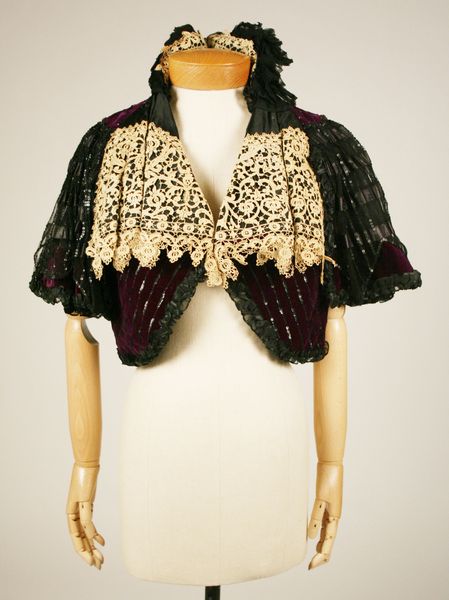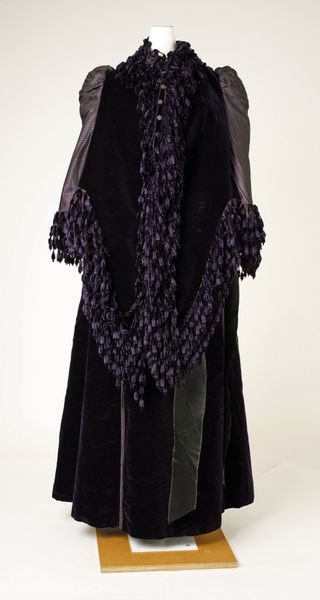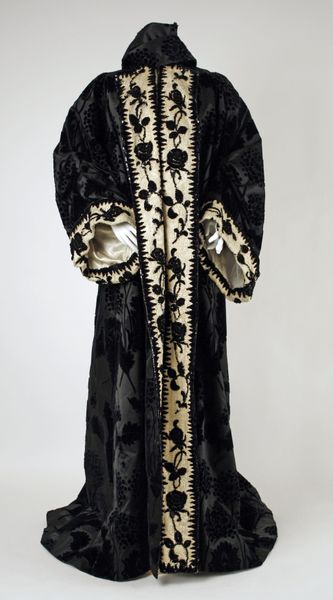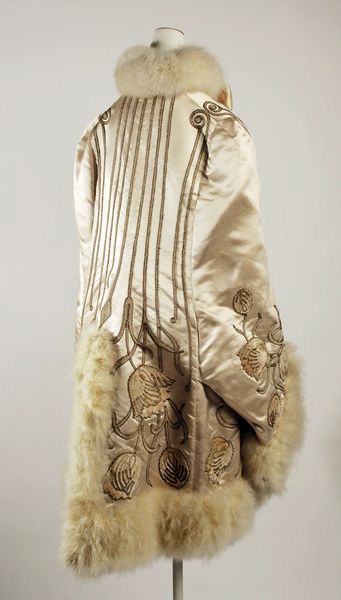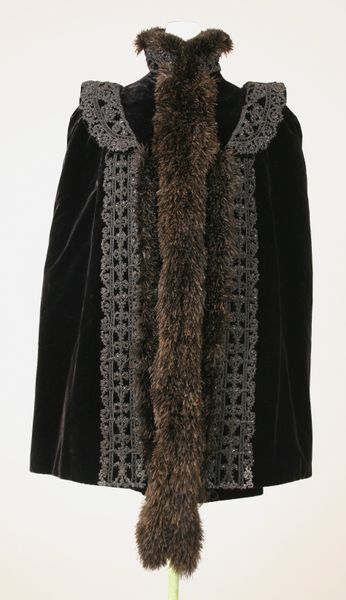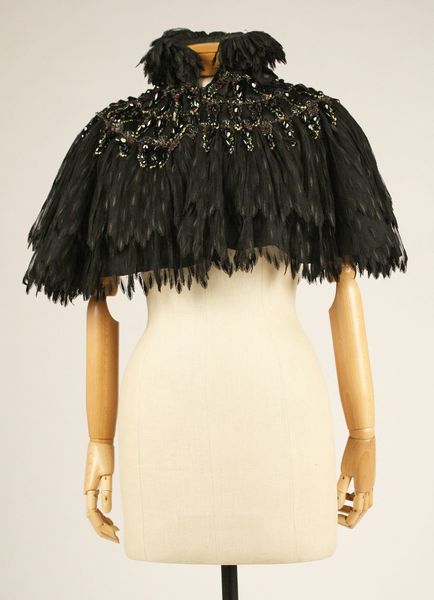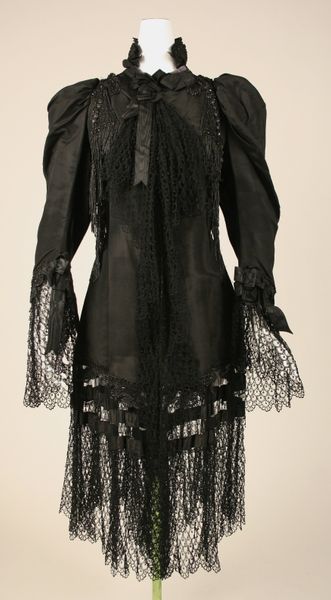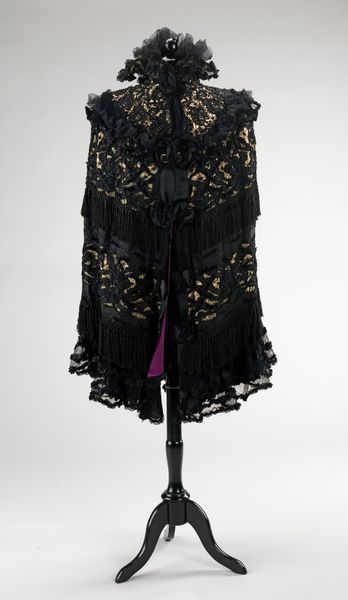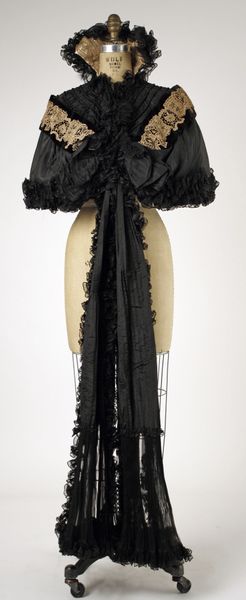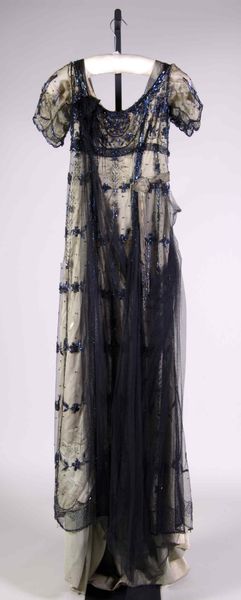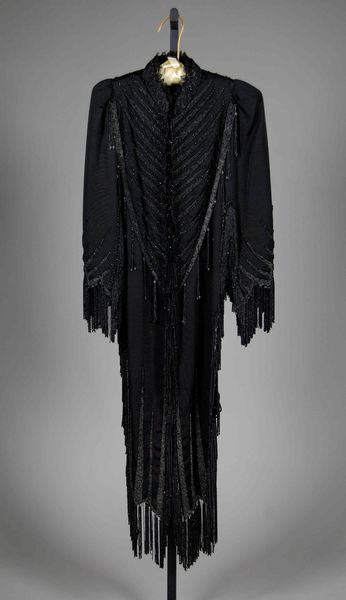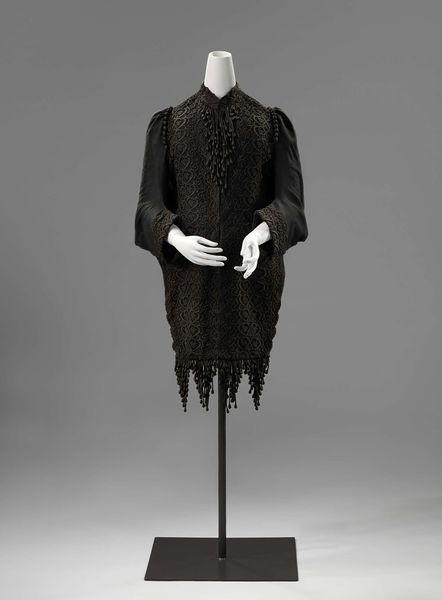
mixed-media, textile
#
fashion design
#
underwear fashion design
#
mixed-media
#
fashion mockup
#
arts-&-crafts-movement
#
textile
#
fashion and textile design
#
historical fashion
#
wearable design
#
clothing theme
#
costume
#
clothing photo
#
decorative-art
#
clothing design
#
bridal fashion
Copyright: Public Domain
Curator: I find this “Mantle,” created sometime between 1890 and 1895 by the House of Worth, utterly striking. The use of mixed media, especially the textile elements, speaks to a dedication to artistry within fashion. Editor: It has a somber, theatrical presence, doesn’t it? The high contrast of black embellishments against the cream lace and the almost overwhelming amount of detail... it evokes a certain gothic sensibility. Curator: Certainly. And it speaks volumes about the era in which it was created, especially considering how fashion houses operated then. Worth was practically an empire. Its influence on the fashion industry dictated trends and shaped expectations of women’s attire during the late 19th century. The Arts and Crafts movement heavily influenced even haute couture. Editor: Exactly. This isn’t simply a beautiful garment; it's a statement. How might wearing something like this have shaped the wearer's identity? This isn’t mere decoration. The weight of the embellishments, both literally and figuratively, would have been substantial. And the high degree of detailing definitely communicates luxury, which meant access to specialized labour and particular kinds of exploitative socio-economic practices at the time. Curator: Yes, Worth’s designs, though luxurious, highlight the inherent contradictions of the Gilded Age: immense wealth built upon complex, often unfair labor systems. Its existence underscores questions about what kind of social rituals might involve such elaborate garment design. Editor: What social function was the "Mantle" intended for? And for whom was the labour carried out by to bring it to fruition? Was it about individual self-expression, or conformity to a certain standard of elite presentation? Curator: Probably some of both, considering Worth’s clientele: European royalty, American socialites... women operating in spaces where visibility was a key aspect of power and influence. Their attire played a significant role. Editor: It’s a potent symbol, indeed. Reflecting both individual expression and societal power structures. I suppose this brings me back to my initial gut reaction. There's so much to unravel. Curator: Indeed. And it provides us with much to consider beyond just its surface aesthetic. Editor: Yes. It makes one think about how the wearer existed in and navigated those spaces with a critical eye, acknowledging that these very fabrics might tell complex, untold stories.
Comments
No comments
Be the first to comment and join the conversation on the ultimate creative platform.
